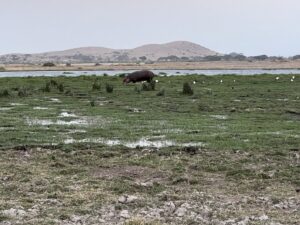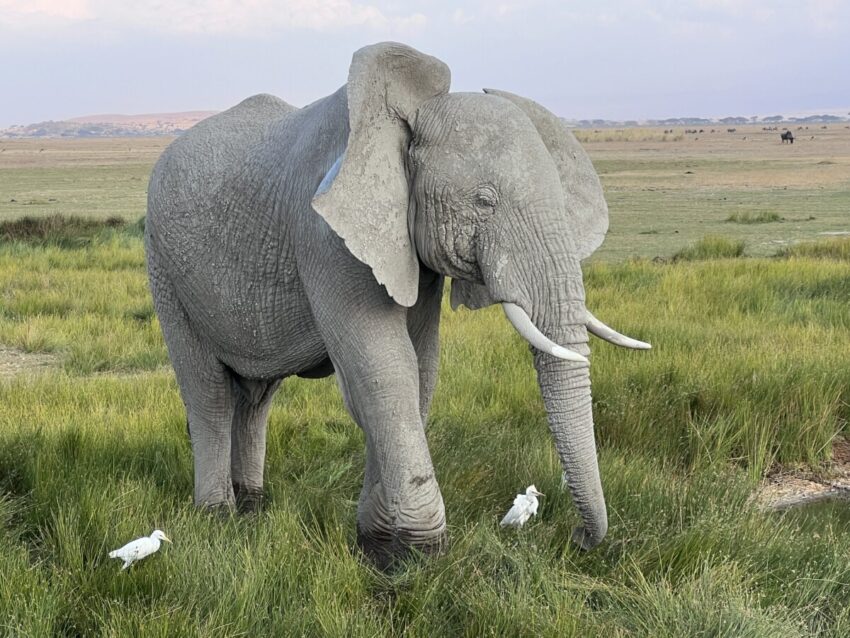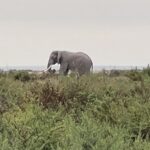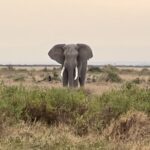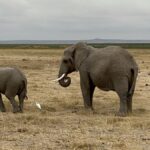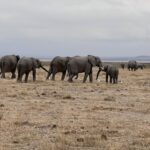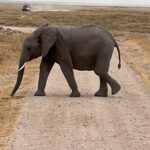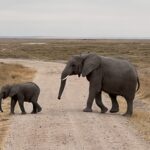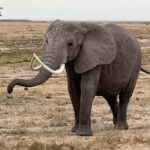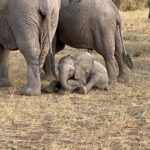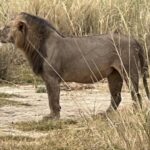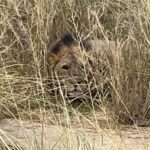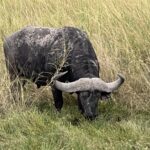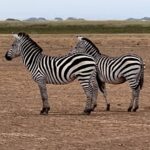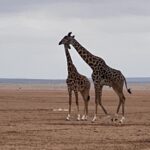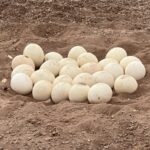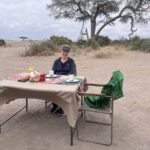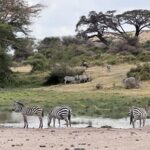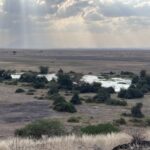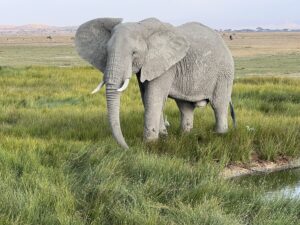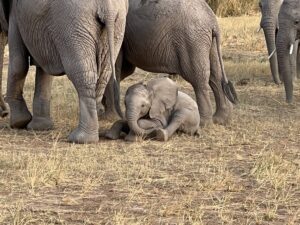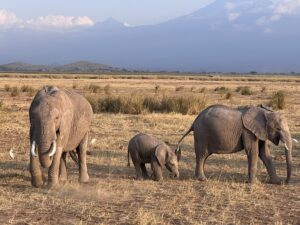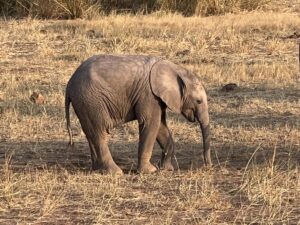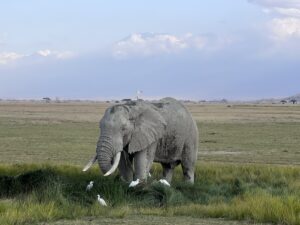Located about a four hour drive and 250 km (150 mi) southeast of Nairobi, Amboseli National Park is well known for its herds of big tusked elephants under the imposing backdrop of the highest free-standing mountain in the world, Mt Kilimanjaro. The 151 km2 (58 mi2) park is a fragile ecosystem with the (usually) dry lake bed at its heart. Surrounding the lake bed and salt flats are beautiful Acacia tortillis woodland and grassy savannah that attract herds of wildebeest, zebra, and gazelle alongside the famed elephants. It is possible to see all the predators but, being a national park, night drives are not permitted.
Local Maasai tribes live in manyattas around Amboseli, and these pastoralists bring their herds to water in and around the park. The name ‘Amboseli’ is indeed derived from a Maa word meaning ‘salty dust’. Today, it is one of Kenya’s most popular national parks.
Day 2 of Amboseli and I can’t get over the elephants. Such amazing and majestic creatures.
Amboseli park has over 1600 Elephant individuals that freely roam at the park ecosystem of the park.
Amboseli has world record of the longest Elephant Tusks and largest Elephants.
Facts about elephants!!
Elephants have around 150,000 muscle units in their trunk. Their trunks are perhaps the most sensitive organ found in any mammal. Elephants use their trunks to suck up water to drink – it can contain up to 8 litres of water. They also use their trunks as a snorkel when swimming.
The ostrich eggs you see are laid by several females in one spot, and one male ostrich keeps watch over the eggs during the incubation period. Fascinating. Then we had a bush breakfast. A toilet was even set up in the bush with a sign which read “Loo with a view!!!”.
More facts about elephants!
Elephant tusks are actually enlarged incisor teeth which first appear when elephants are around 2 years old. Tusks continue growing throughout their lives.
Tusks are used to help with feeding – prising bark off trees or digging up roots – or as a defense when fighting.
But these beautiful tusks often cause elephants danger. They’re made from ivory; a much desired object. Read on to find out why elephants are under threat.
Elephants eat grasses, leaves, shrubs, fruits and roots depending on the season and their habitat. When it’s particularly dry, elephants will eat more woody parts of trees and shrubs like twigs, branches and barks. They need to eat up to 150kg of food per day – that’s around 375 tins of baked beans – although half of this may leave the body undigested.
Elephants eat so much that they can spend up to three-quarters of their day just eating.
An elephant’s skin is 2.5cm thick in most places. The folds and wrinkles in their skin can retain up to 10 times more water than flat skin does, which helps to cool them down.
They keep their skin clean and protect themselves from sunburn by taking regular dust and mud baths.
Elephants communicate in a variety of ways – including sounds like trumpet calls (some sounds are too low for people to hear), body language, touch and scent. They can also communicate through seismic signals – sounds that create vibrations in the ground – which they may detect through their bones.
Amazingly, elephant calves are able to stand within 20 minutes of being born and can walk within 1 hour. After two days, they can keep up with the herd.
This incredible survival technique means that herds of elephants can keep migrating to find food and water to thrive.
The elephant’s temporal lobe (the area of the brain associated with memory) is larger and denser than that of people – hence the saying ‘elephants never forget’.
One never tires of observing the animals.
